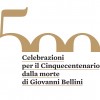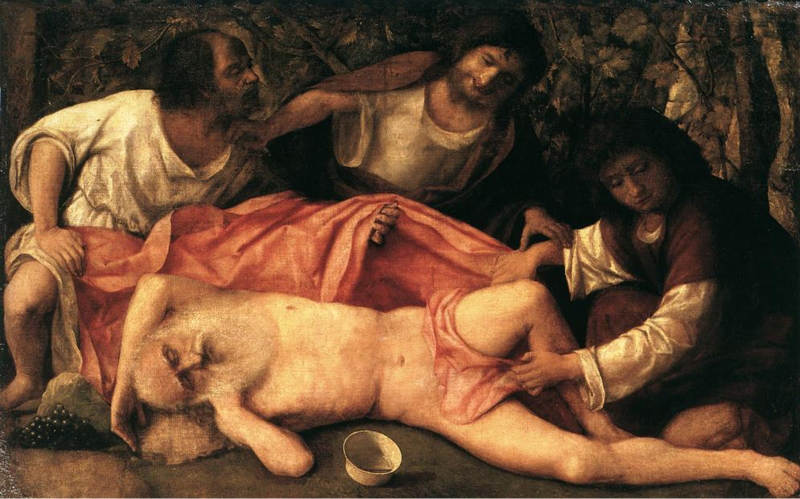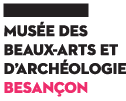

Attributing the Drunkenness of Noah to Giovanni Bellini
Though painted in 1515, the work is first mentioned in 1895 in the inventory compiled after the death of Jean Gigoux, the collector who had discovered and purchased it in view of his bequest to the museum in Besançon one year later. Its history during the four previous centuries remains unknown.
The authorship of the work would be discussed at length: Cariani, Lotto, and Titian were all named alongside Giorgione. In 1927 the critic Roberto Longhi, and in 1957 the American art historian Bernard Berenson, confirmed the attribution to Bellini, dating the painting at the end of the Venetian artist’s life. For seventy years now, the work has been included in the major exhibitions and publications that have brought out the modern impact of Giovanni Bellini’s work in Europe. It has emerged, almost unanimously, as one of Bellini’s masterpieces and was defined by Longhi in 1956 as “the first work of modern painting.”
The Drunkenness of Noah in Bellini’s Oeuvre
The artist, who was defined by Dürer in 1506 as “very old, but still the best painter of all,” took on new themes in a series of paintings that included the Drunkenness of Noah, which is the only one inspired by the Old Testament. The painting can be considered a sort of “visual testament,” characteristic of the master’s last manner, in which he approached the style of his student Giorgione, who had died in 1510. The psychological expression of the three brothers and especially the freeness of the brushstrokes and the artist’s vibrant touch give this painting the “atmospheric” quality, in which Bellini shows he has assimilated Giorgione’s revolution but is also still quite capable of inventing a new iconography on a rare theme in the history of painting.
The Drunkenness of Noah: Which Interpretation?
Based on Genesis (9.18-27), the theme evokes the episode in which Noah, drunk after tasting the wine from his vineyards, has fallen asleep naked. His son Ham discovers him dozing and informs his brothers Shem and Japheth. They want to hide his nakedness, but Ham laughs at the sight of what the Greeks called the “shameful parts.” Noah curses Ham and descendants (Canaan) condemning them to slavery. This family drama is interpreted as the reinstatement of a hierarchical order among the survivors of the purifying flood, the cause of and justification for inequality among the descendants of the three sons.
What these interpretations concern is essentially:
- the composition’s religious symbolism (Noah ridiculed, prefiguring Christ mocked; wine, a symbol of the Eucharist);
- the theme’s psychological treatment (the composition’s framing, which is similar to a bas-relief and projects the group toward its viewers forcing the disturbing sight of the rigid body upon them), and possibly its autobiographical implications;
- the different aspects of “invention” in Bellini at the end of his life (the gestures and exchange of glances);
- the moral and political context in which the work was conceived (an invitation to peace at a time when Venice was facing a Europe united under the League of Cambrai).


